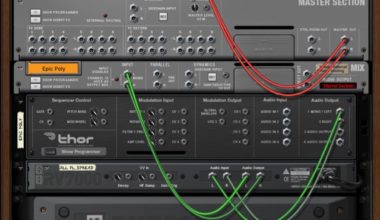
The foundation of your songs’ structure is provided by their basic chord progressions.
One of the most crucial tasks while producing a song is selecting the chords you’ll use and organizing them into appealing progressions.
But if you don’t know a few fundamental ones to get your creative juices flowing, it can be challenging to come up with new chord progressions.
There are so many songs that use the same basic chord progressions in modern music.
You’ll have a head start on making your own if you comprehend how the most popular ones function—plus, you’ll be able to play a ton of tunes!
This article will cover the most well-known chord progressions in music. You can also learn to extract chords from your favorite songs using the iconic music theory plugin, Scaler 2.
Roman numerals rather than the chords’ letter names will be used in some instances to represent the chords. In my forthcoming starter guide for basic chord progressions, you can brush up on Roman numeral usage in music. These are the top 7 basic chord progressions in modern music.
I-V-vi-IV
The phrase “the most popular progression” applies to this progression.
From post-punk to country, it has been employed in just about every genre imaginable.
Each each chord in the rhythm feels like a new emotional declaration, which is why it sounds so rewarding.
Once you understand how this one works, you’ll start to hear it in mainstream modern music all the time.
I, IV and V
The fundamental chord progressions in western music are I, IV, and V.
These chords can be found playing a significant part in every major music genre.
The answer is related to functional harmony.
The three basic chord types in tonal music—tonic, pre-dominant, and dominant—are I, IV, and V.
To produce the feeling of tension and release that gives chord progressions their forward drive, you must move from one to the other and back again.
The fundamental chord progressions in western music are I, IV, and V. These chord progressions can be found in almost too many tunes to count.
ii-V-I
Certain chord progressions are intimately related to certain musical genres.
Nearly all jazz standard tunes are built on the ii-V-I sequence.
The most effective jazz chord progressions feature it in many shapes and sizes because it is so crucial.
These enduring harmonic structures are crucial to understand, regardless of whether you enjoy jazz.
Jazz harmony had a significant influence on many contemporary genres. The ii-V-I is a crucial sound in R&B, neo-soul, and hip-hop.
12 Bar Blues
The 12 bar blues is a crucial chord progression that originates from a particular style, and we’re talking about genre progressions here.
Although it is the foundation of blues music, it may also be heard in many other genres.
The 12 bar blues can even sound more “happy” than bluesy, depending on how you play it.
You should include this adaptable progression in your toolbox as a songwriter.
Here is an intriguing application of the 12 bar blues that demonstrates its adaptability to a variety of moods.
I-vi-IV-V
The do-wop and legendary love songs of the 1950s are often linked with this frequent chord progression, but it may be found throughout music history.
It has a smooth progression in the first half from the tonic to the sixth, which offers a wonderful blank slate for vocal melodies.
Each chord that follows strengthens the progression’s enticing arc as it returns to the tonic.
You can hear how this progression evokes strong emotions in modern music and classic ballads like “Unchained Melody” by The Righteous Brothers.
Canon
This chord progression is based on one of classical music’s most enduring melodic progressions.
The trick to this progression is how it moves elegantly back to the tonic after stopping at so many various chords throughout the key.
It is frequently used for formal occasions like weddings and commencements because of its elegant yet moving sound. Consider the poignant hit song “Graduation” by Vitamin C.
Surprisingly, it also works in a variety of different situations. Here is a wonderful illustration in the upbeat song “Get Me Away from Here I’m Dying” by Belle and Sebastian.
I-bVII-I
This is more of a harmonic method that is frequently used in rock and pop tunes rather than a chord progression.
Sometimes not much is required to produce enough harmonic motion to carry a song.
Simplifying the harmony, like in this “progression” that moves from the tonic to bVII and back again, is a simple technique to keep a song focused while still keeping it going forward.
bVII is a borrowed chord from the natural minor scale, but because it is only one whole step from the tonic, it sounds familiar.
Because of its connection to the Mixolydian mode, bVII gives a progression pleasing color.
Rock music frequently uses the mixolydian sound; once you hear it again, you’ll understand what I mean.
Chord deconstruction
One of the most crucial elements in music theory to master is the evolution of chords.
The best course of action is to start with the fundamentals, just like with every ability you acquire along the way.
If you want to deconstruct the chords used in your favorite songs for inspiration, Scaler 2 is a VST plugin that will allow you to do this.
Now that you are aware of some of the most typical chord progressions in music, return to your DAW and continue to work on your tunes.





